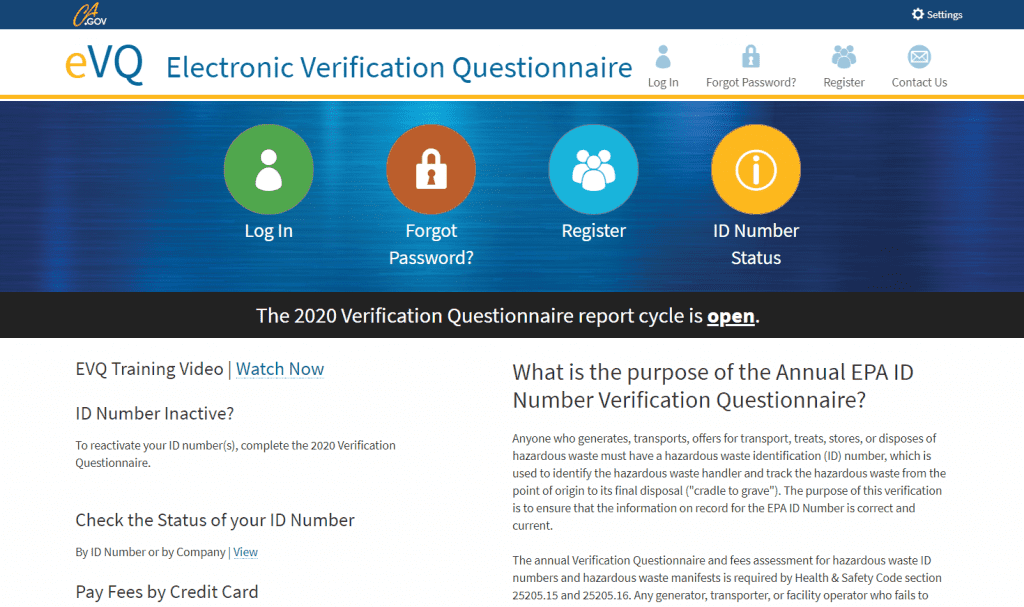
eVQ 2020: Reporting Window Open for Hazardous Waste Generators
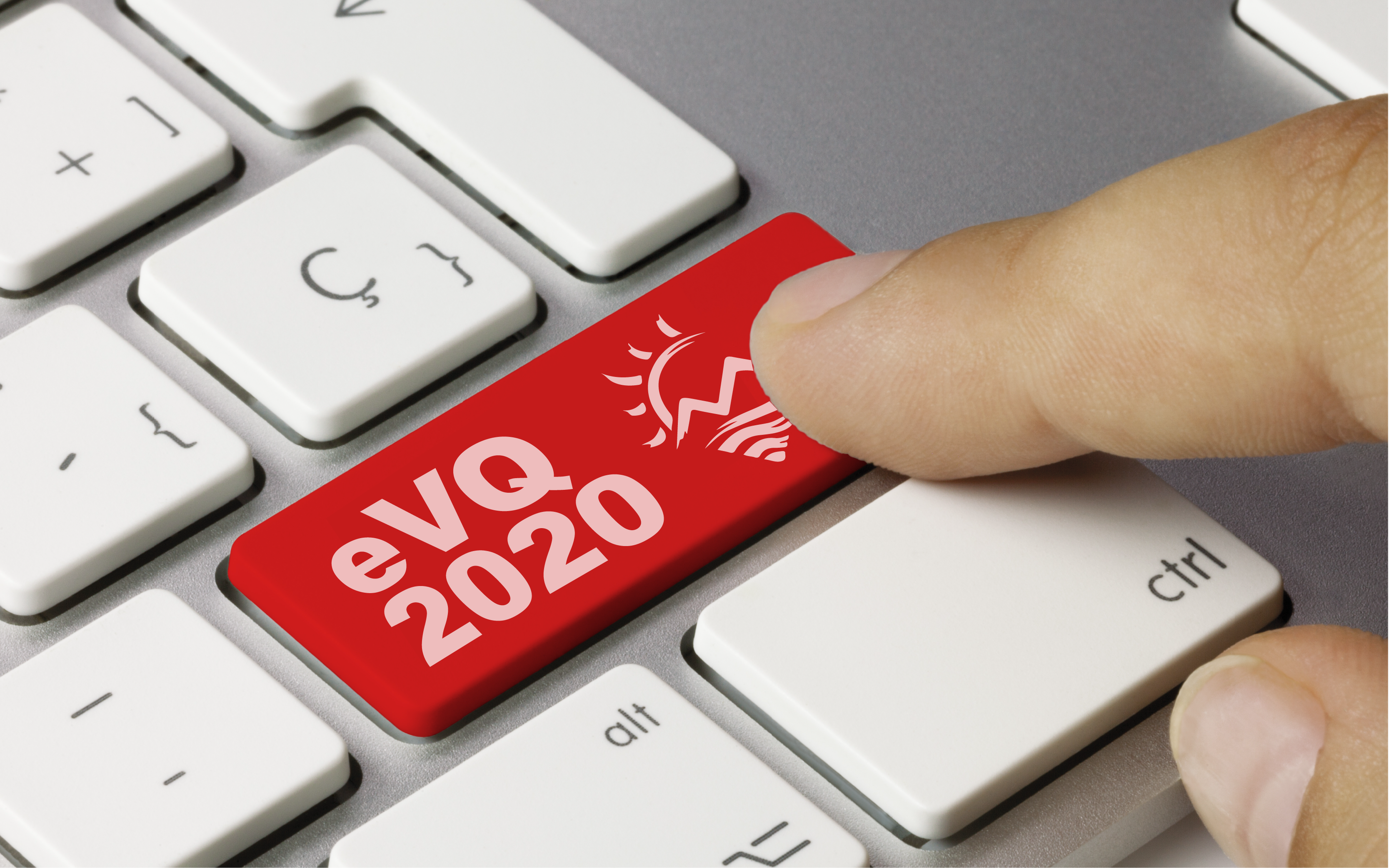
Written by: Virginia McCormick, NES, Inc.
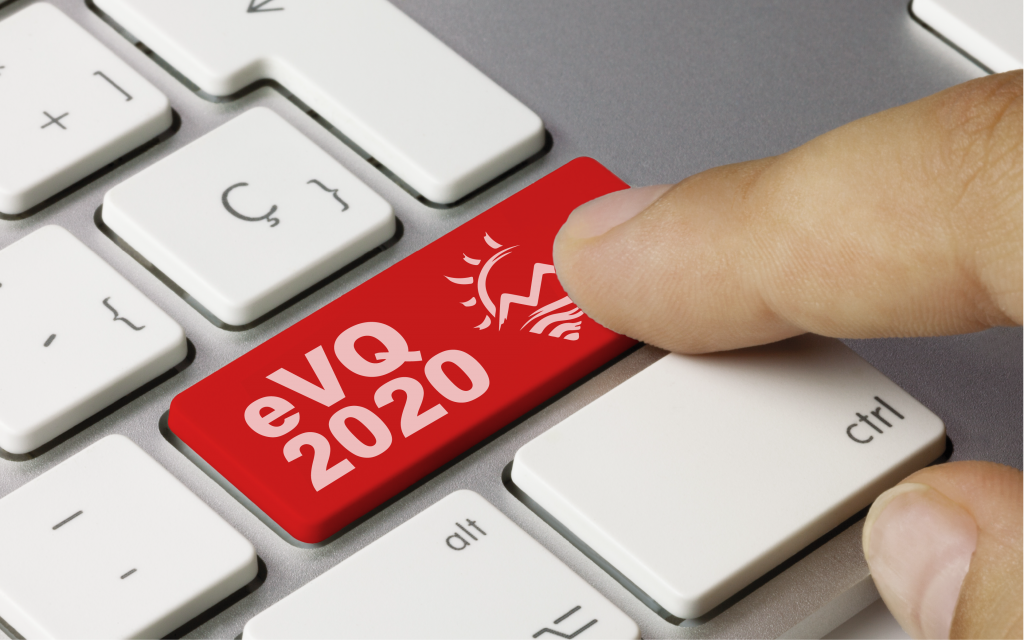
Hazardous waste generators must obtain and maintain the proper State and federal identification numbers.
2020 eVQ: Annual Reporting for Compliance
Hazardous waste generators in California have begun to receive their notices to complete the 2020 Environmental Protection Agency (EPA) ID Number Verification Questionnaire, otherwise known as the 2020 eVQ. Businesses in California that generate 100 kg or less of RCRA non-acute hazardous waste or 1 kg or less of RCRA acutely hazardous waste must have a State ID number, opposed to a federal EPA ID number.
State ID numbers are issued by the California Department of Toxic Substances Control (DTSC) and are validated through the eVQ. DTSC is the lead agency in California for hazardous waste management. DTSC enforces the state’s Hazardous Waste Control laws, issues permits to hazardous waste facilities, and mitigates contaminated hazardous waste sites.
According to DTSC, any company in California that meets either (or both) of the following criteria must complete the 2020 eVQ:
- The company hazardous waste EPA ID number was active any time during the 2019/2020 fiscal year (July 1, 2019 – June 30, 2020)
- The company manifested hazardous waste using an assigned hazardous waste EPA ID number during the 2019 calendar year (January 1, 2019 – December 31, 2019)
To learn more about California’s hazardous waste generator regulations, see the July 2019 NES article The DTSC Hazardous Waste Generators Program.
The eVQ homepage is located on the DTSC website and is the only place business owners should go to verify their information.
How to Complete the 2020 eVQ
When the eVQ cycle opens, an email notification is sent to ID number holders with active status any time during the previous fiscal year and/or those that manifested hazardous waste any time during the previous calendar year. New ID number holders must register an eVQ account number before starting the questionnaire. Account registration requires a valid EPA ID number and a Federal Tax Identification Number.
The eVQ is due 30 days from when the ID number holder receives the first notification. If a company does not complete the 2020 eVQ within the 30-day deadline, its ID numbers may be revoked per California Health & Safety Code section 25205.16(c).
Using the following five steps, the eVQ System provides a fast and convenient way for required hazardous waste handlers to file their annual EPA ID Number Verification Questionnaire and Manifest Fees Assessment with DTSC.
- Step 1: Contact information, including the contact person’s name, address, email, and phone numbers.
- Step 2: Company information, where the company mailing address and owner information is submitted.
- Step 3: EPA ID number & hazardous waste manifest verification, which verifies the EPA ID number and hazardous waste manifest counts are populated.
- Step 4: Fees assessment, where applicable fees for the company are calculated.
- Step 5: Fee summary & certification, when the fee assessment is reviewed, and the questionnaire can be saved and flagged as completed.
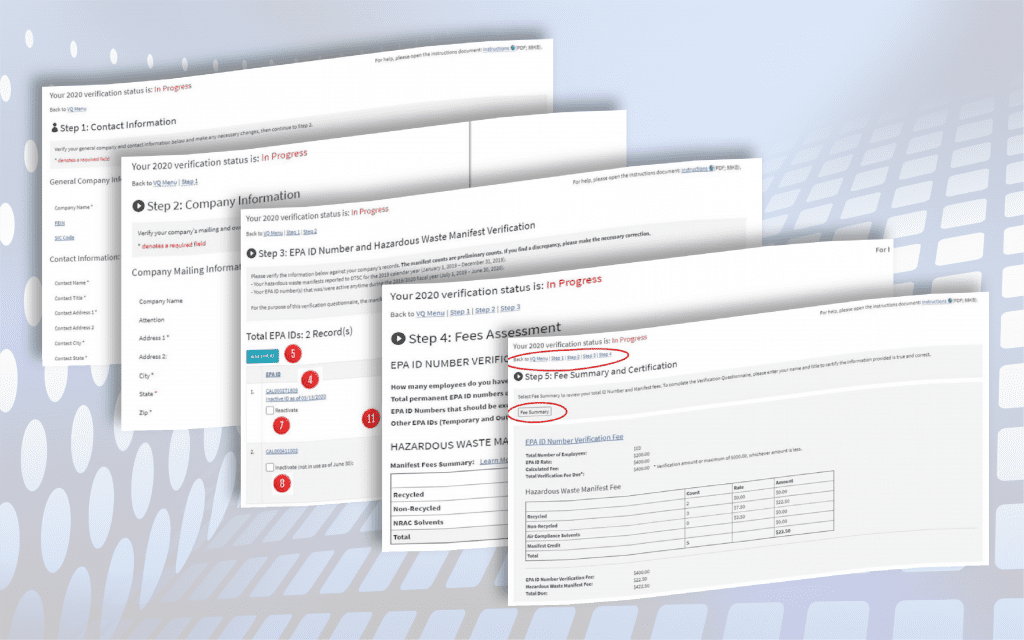
Each of the 2020 eVQ steps is essential to DTSC’s mission of managing hazardous waste in California.
If fees are owed, the system will prompt a payment to be made either by check or credit card. It is recommended to print the invoice even if the company does not owe any fees. If changes are needed to the eVQ after step 5 is completed, assistance can be requested by emailing eVQ@dtsc.ca.gov.
Last year, NES published a more detailed, thorough guide to completing the eVQ. This past guide can be used for the 2020 reporting period. For more information, see the September 2019 NES blog eVQ 2019: A Step-by-Step Guide to Compliance.
Value of the 2020 eVQ
The eVQ verifies that the information on record for the EPA ID number is correct and is used to collect State-mandated fees, which are calculated based on the number of hazardous waste manifests that were generated over the past year.
The eVQ plays an important role in California’s goal to track and regulate hazardous waste within the state. By providing a fast and convenient way for hazardous waste handlers to complete the required annual verification and fees assessment, California can better identify and respond to potential environmental and public hazards.
The reporting cycle for the eVQ is only open during a short period of the year, and the 2020 reporting cycle has been open since early July. Non-completion of the eVQ can result in a suspended EPA ID number, so it is important that hazardous waste generators, transporters, and facility operators are aware of their specific verification deadlines.
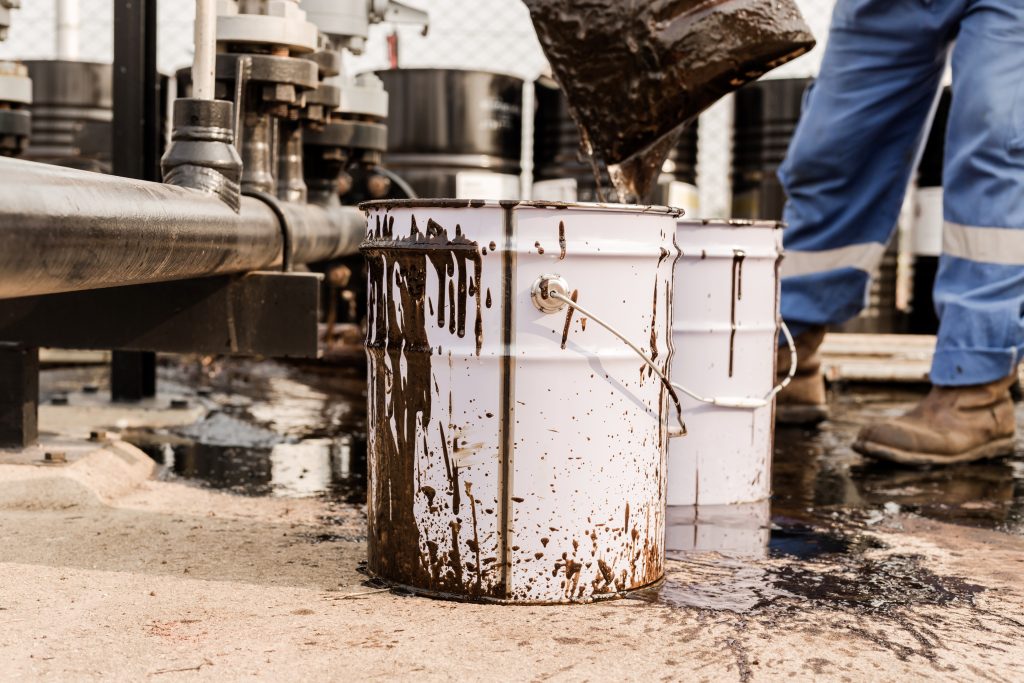
The DTSC Hazardous Waste Generators program, which includes the 2020 eVQ, regulates the hazardous waste generated by California businesses.
NES Training & Consulting
NES offers DOT Hazmat Employee training for employees who affect the safe transportation of hazardous materials and Uniform Hazardous Waste Manifest training for those who sign manifests as part of their job duties. Training is offered in both in-class and online formats; visit our transportation course listings page to view available programs.
NES also regularly provides a broad range of environmental health & safety training programs and consulting services on behalf of public and provide businesses throughout California and beyond. If your business requires assistance with hazardous waste compliance requirements or procedures, please contact NES at 916-353-2360 / 800-637-2384 or via email at office@nesglobal.net
References:
DTSC Electronic Verification Questionnaire
Hazardous Waste ID Number Verification Questionnaire FAQ

